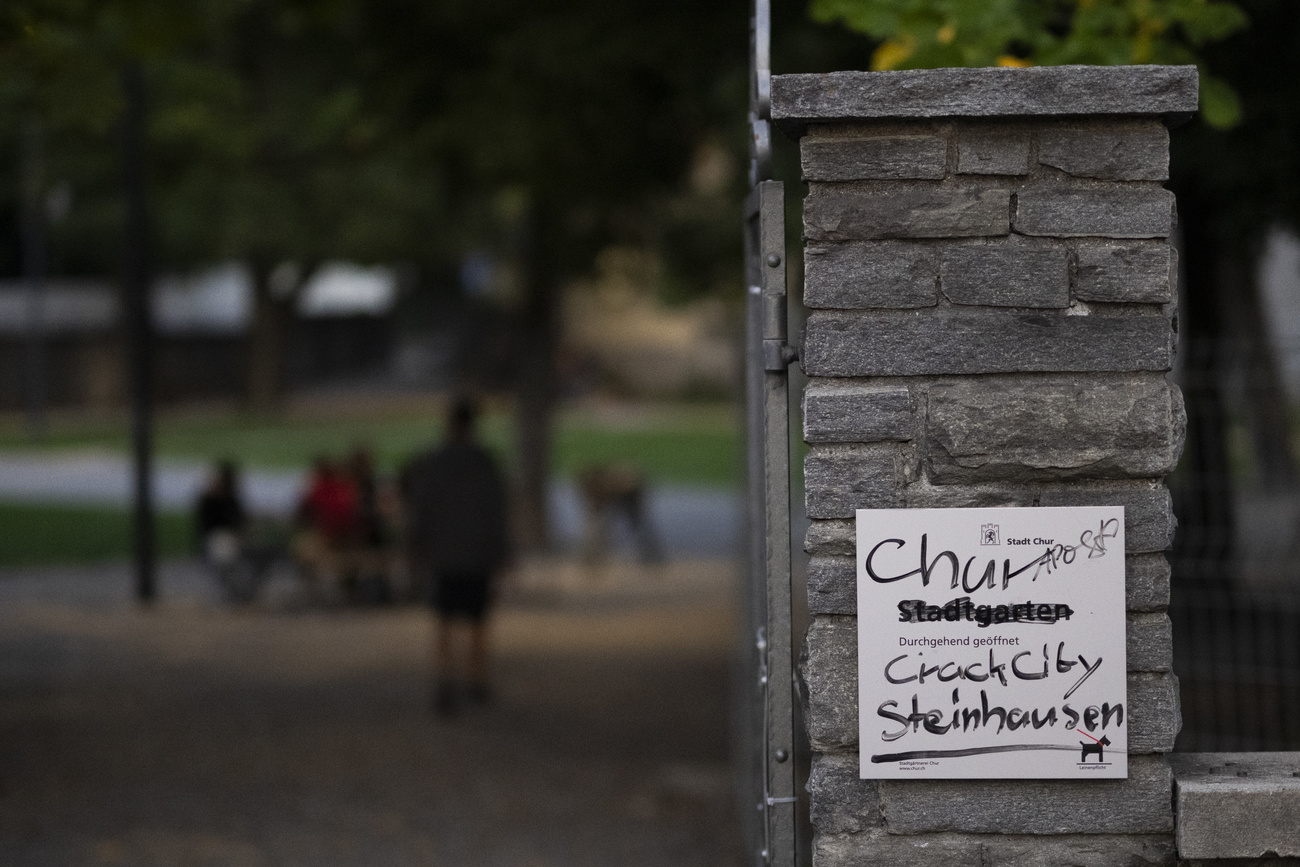Swiss lose taste for white wine

The Swiss are drinking less wine, according to figures released by the Federal Office for Agriculture.
They show consumption of foreign wine increasing, while the biggest loser in the changing market is traditional Swiss white wine.
And for the first time, imports of Italian wine have overtaken imports of wine from France.
In the 12 months between June 2002 and June 2003, the average Swiss drank around half a litre less wine than in the previous year, reducing annual consumption per person from 39.5 litres to 39.
The main reduction was in the consumption of Swiss white wine, which fell by 5.3 million litres in 2002/2003 to 57.2 litres.
More work, less play
Philippe Herminjard of the Office for Agriculture believes the decrease is a reflection of our increasingly work dominated lives.
“More and more people are working all day in offices,” Herminjard told swissinfo. “And wine drinking isn’t really compatible with that.”
Claude Alain Chollet, of the Swiss Wine Producers’ Association, agrees.
“People are working more, they are driving more, and they are drinking more water instead of wine,” he told swissinfo.
Italy beats France
One new development reflected in the recent figures is that Switzerland now imports more wine from Italy than it does from the mother of wine-producing nations, France.
“In fact I’m not especially surprised by that,” said Chollet. “I’ve always thought Italian wines are much better than French ones – apologies to any French reading this.”
For Chollet, an increase in imports from Italy is no threat to the domestic market, especially as all the Swiss wine produced is still sold easily in Switzerland.
“What we are more concerned about is wines from the new world,” Chollet explained. “And that is because countries like Australia and South Africa have not signed the agreement which European countries have, which states that wine is made from grapes and that’s all.”
“That means they can add colours and flavours, and the wine is very cheap. We think this kind of wine belongs on the drug market, not the wine market, because it’s really not the same product.”
No cause for alarm
Although wine consumption has been falling steadily in Switzerland for several decades – in the 19th century the average Swiss drank between half a litre and a litre of domestic white wine every day – Chollet doesn’t think the current drop is any cause for concern.
“That’s just the way it is,” he said. “And from an annual consumption of around 40 litres, half a litre less is not a big deal.”
The association, which brings together wine producing families, and accounts for about 30 per cent of Switzerland’s wine producing market, believes Swiss wine has a strong future, as long as the focus is on quality rather than quantity.
“We are producing less wine every year, but we are trying to make better wine,” Chollet explained.
Changing tastes
And Chollet believes there is still a future for Swiss white wine, the sector of the market which has suffered most, as long as producers adapt to changing tastes.
“I don’t think it is that people don’t want white wine,” he explained. “But they want something fruitier than the traditional light white wines for drinking with fondue and raclette.
”I think growers who plant Sauvignon or Chardonnay grapes, rather than the traditional Swiss Chasselas, will find customers.”
“The market for the Swiss wine grower is to produce really good wine – not cheap, because you can’t produce wine cheaply in Switzerland – but something really very nice.”
swissinfo with agencies
In the wine year 2002/2003 285.7 million litres of wine were drunk, 3.8 million litres less than in the previous year.
At the same time, wine imports increased, with imports from Italy overtaking imports from France for the first time.
Traditional Swiss white wine has suffered most; 57.2 litres were consumed in 2002/2003, 5.3 litres less than the previous year.
In the 19th century, the average Swiss typically drank up to a litre of domestic Swiss white wine every day.
The wine was light and dry, suited to cheese dishes such as fondue and raclette.
Today, tastes are changing; consumers are turning more to red wine, and to fruitier white wines such as Chardonnay and Sauvignon blanc

In compliance with the JTI standards
More: SWI swissinfo.ch certified by the Journalism Trust Initiative









You can find an overview of ongoing debates with our journalists here . Please join us!
If you want to start a conversation about a topic raised in this article or want to report factual errors, email us at english@swissinfo.ch.